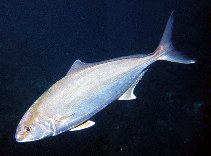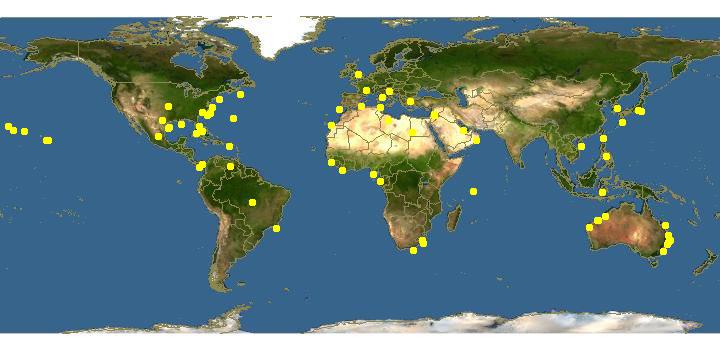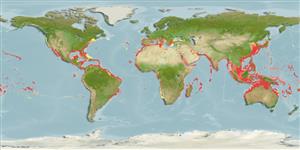http://www.fishbase.org/Summary/speciesSummary.php?genusname=Seriola&speciesname=dumerili ---> http://192.134.151.83/Summary/speciesSummary.php?genusname=Seriola&speciesname=dumerili
http://192.134.151.83/Summary/speciesSummary.php?genusname=Seriola&speciesname=dumerili ---> https://fishbase.mnhn.fr/Summary/speciesSummary.php?genusname=Seriola&speciesname=dumerili
https://fishbase.mnhn.fr/Summary/speciesSummary.php?genusname=Seriola&speciesname=dumerili ---> https://fishbase.mnhn.fr/summary/Seriola-dumerili.html
Seriola dumerili, Greater amberjack : fisheries, aquaculture, gamefish, aquarium

You can
sponsor
this page
Common name (e.g. trout)
Genus + Species (e.g. Gadus morhua)
-

-
About this page
-
Languages
-
User feedbacks
-
Citation
-
Uploads
-
Related species
-


 Greater amberjack
Add your observation in
Fish Watcher
Upload your
photos
and
videos
Greater amberjack
Add your observation in
Fish Watcher
Upload your
photos
and
videos
Pictures
|
Videos |
Sounds
|
Stamps, Coins Misc.
|
Google image
 Seriola dumerili
Seriola dumerili
Picture by
Pontes, M.
Teleostei (teleosts) >
Carangiformes
(Jacks) >
Carangidae
(Jacks and pompanos) > Naucratinae
Etymology:
Seriola:
Latin word diminutive with the meaning of a large earthenware pot (Ref.
45335
)
.
More on author:
Risso
.
Environment: milieu / climate zone / depth range / distribution range
Ecology
Marine; reef-associated; oceanodromous (Ref.
51243
); depth range 1 - 385 m (Ref.
11441
), usually 18 - 72 m (Ref.
9626
). Subtropical; 49°N - 36°S, 98°W - 128°E
Circumglobal. Tropical and warm temperate seas. Indo-West Pacific: South Africa, Persian Gulf, southern Japan and the Hawaiian Islands, south to New Caledonia; Mariana and Caroline islands in Micronesia. Western Atlantic: Bermuda (Ref.
26938
), Nova Scotia, Canada to Brazil; also from the Gulf of Mexico and the Caribbean Sea (Ref.
9626
). Eastern Atlantic: British coast (vagrant) to Morocco and the Mediterranean. Distribution in eastern central Atlantic along the African coast is not well established due to past confusion with
Seriola carpenteri
(Ref.
7097
).
Length at first maturity / Size / Weight / Age
Maturity: L
m
90.8
, range 80 - 127 cm
Max length : 190 cm TL male/unsexed; (Ref.
3397
); common length : 100.0 cm TL male/unsexed; (Ref.
3197
); max. published weight: 80.6 kg (Ref.
3287
); max. reported age: 15 years (Ref.
113943
)
Dorsal
spines
(total): 8;
Dorsal
soft rays
(total): 29-35;
Anal
spines
: 3;
Anal
soft rays
: 18 - 22. Bluish grey or olivaceous above, silvery white below; amber stripe along midside of body; fins dusky (Ref.
3197
). Second dorsal and anal fins with low anterior lobe (Ref.
26938
). Species of
Seriola
lack scutes (Ref.
37816
).
Adults found in deep seaward reefs; occasionally entering coastal bays. They feed primarily on fishes such as the bigeye scad, also on invertebrates (Ref.
4233
). Small juveniles associate with floating plants or debris in oceanic and offshore waters. Juveniles form small schools or solitary (Ref.
5213
). Eggs are pelagic (Ref.
4233
). Utilized fresh and frozen; eaten pan-fried, broiled and baked (Ref.
9987
). Reported to cause ciguatera in some areas (Ref.
26938
).
Spawning happens during the summer, in areas near the coast. Embryo development lasts about 40 hours at 23° and larval development 31-36 days. Egg size 1.9 mm, larval at hatching 2.9 mm.
Paxton, J.R., D.F. Hoese, G.R. Allen and J.E. Hanley
, 1989. Pisces. Petromyzontidae to Carangidae. Zoological Catalogue of Australia, Vol. 7. Australian Government Publishing Service, Canberra, 665 p. (Ref.
7300
)
IUCN Red List Status (Ref.
130435
)
Least Concern (LC)
; Date assessed:
07 November 2013
CITES
Not Evaluated
Not Evaluated
Threat to humans
Reports of ciguatera poisoning
Human uses
Fisheries: minor commercial; aquaculture: commercial; gamefish: yes; aquarium: public aquariums
FAO - Aquaculture:
production
; Fisheries:
landings
; Publication:
search
|
FishSource
|
Sea Around Us
More information
Countries
FAO areas
Ecosystems
Occurrences
Introductions
Stocks
Ecology
Diet
Food items
Food consumption
Ration
Common names
Synonyms
Metabolism
Predators
Ecotoxicology
Reproduction
Maturity
Spawning
Spawning aggregation
Fecundity
Eggs
Egg development
Age/Size
Growth
Length-weight
Length-length
Length-frequencies
Morphometrics
Morphology
Larvae
Larval dynamics
Recruitment
Abundance
BRUVS
References
Aquaculture
Aquaculture profile
Strains
Genetics
Electrophoreses
Heritability
Diseases
Processing
Nutrients
Mass conversion
Collaborators
Pictures
Stamps, Coins Misc.
Sounds
Ciguatera
Speed
Swim. type
Gill area
Otoliths
Brains
Vision
Tools
Bio-Quiz
|
E-book
|
Field guide
|
Identification keys
|
Length-frequency wizard
|
Life-history tool
|
Point map
|
Classification Tree
|
Catch-MSY
|
Special reports
Check for Aquarium maintenance
|
Check for Species Fact Sheets
|
Check for Aquaculture Fact Sheets
Download XML
Summary page
|
Point data
|
Common names
|
Photos
Internet sources
AFORO (otoliths)
|
Aquatic Commons
|
BHL
|
Cloffa
|
BOLDSystems
|
Websites from users
|
Check FishWatcher
|
CISTI
|
Catalog of Fishes
:
genus
,
species
|
DiscoverLife
|
DORIS
|
ECOTOX
| FAO - Aquaculture:
production
; Fisheries:
landings
; Publication:
search
|
Faunafri
| Fishipedia |
Fishtrace
| GenBank:
genome
,
nucleotide
|
GloBI
|
GoMexSI
(interaction data)
|
Google Books
|
Google Scholar
|
Google
|
IGFA World Record
|
MitoFish
|
National databases
|
OceanAdapt
| OsteoBase:
skull
,
spine
|
Otolith Atlas of Taiwan Fishes
|
Public aquariums
|
PubMed
|
Reef Life Survey
|
Socotra Atlas
|
Tree of Life
| Wikipedia:
Go
,
Search
| World Records Freshwater Fishing |
Zoological Record
Estimates based on models
Preferred temperature (Ref.
123201
): 16.9 - 29, mean 27.1 °C (based on 3486 cells).
Phylogenetic diversity index (Ref.
82804
): PD
50
= 0.5020 [Uniqueness, from 0.5 = low to 2.0 = high].
Bayesian length-weight: a=0.01622 (0.01235 - 0.02130), b=2.92 (2.84 - 3.00), in cm total length, based on LWR estimates for this species (Ref.
93245
).
Trophic level (Ref.
69278
): 4.5 ±0.0 se; based on diet studies.
Generation time: 5.5 (3.9 - 5.8) years. Estimated as median ln(3)/K based on 11
growth studies.
Resilience (Ref.
120179
): Medium, minimum population doubling time 1.4 - 4.4 years (K=0.18; tm=4; tmax=15).
Prior r = 0.59, 95% CL = 0.39 - 0.89, Based on 4 stock assessments.
Fishing Vulnerability (Ref.
59153
): Moderate to high vulnerability (54 of 100).
Climate Vulnerability (Ref.
125649
): High vulnerability (62 of 100).
Price category (Ref.
80766
):
High
.
Nutrients (Ref.
124155
): Calcium = 15 [7, 27] mg/100g; Iron = 0.641 [0.347, 1.180] mg/100g; Protein = 19.9 [16.9, 22.6] %; Omega3 = 0.238 [0.141, 0.418] g/100g; Selenium = 31.8 [16.4, 60.8] μg/100g; VitaminA = 62.5 [8.3, 430.9] μg/100g; Zinc = 0.351 [0.235, 0.528] mg/100g (wet weight); based on
nutrient studies.
Back to Search
Random Species
Back to Top
Accessed through:
Not available
FishBase mirror site :
localhost
Page last modified by :
mrius-barile
- 20 July 2016
Fatal error
: Uncaught ArgumentCountError: Too few arguments to function checkEcotox(), 1 passed in /var/www/html/summary/speciessummary.php on line 2304 and exactly 3 expected in /var/www/html/includes/speciessummary.lib.php:2579 Stack trace: #0 /var/www/html/summary/speciessummary.php(2304): checkEcotox() #1 {main} thrown in
/var/www/html/includes/speciessummary.lib.php
on line
2579
|






